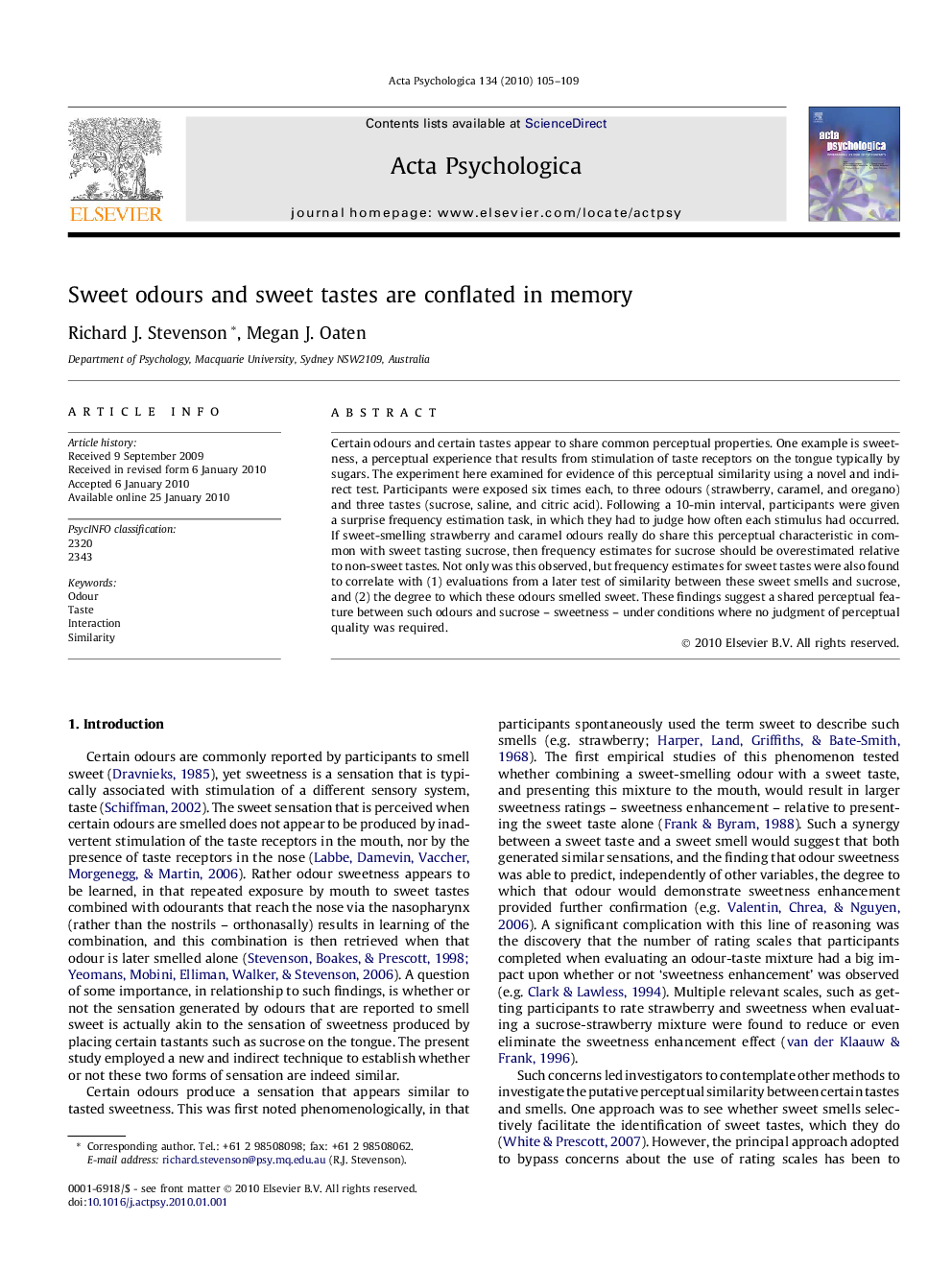| Article ID | Journal | Published Year | Pages | File Type |
|---|---|---|---|---|
| 920329 | Acta Psychologica | 2010 | 5 Pages |
Certain odours and certain tastes appear to share common perceptual properties. One example is sweetness, a perceptual experience that results from stimulation of taste receptors on the tongue typically by sugars. The experiment here examined for evidence of this perceptual similarity using a novel and indirect test. Participants were exposed six times each, to three odours (strawberry, caramel, and oregano) and three tastes (sucrose, saline, and citric acid). Following a 10-min interval, participants were given a surprise frequency estimation task, in which they had to judge how often each stimulus had occurred. If sweet-smelling strawberry and caramel odours really do share this perceptual characteristic in common with sweet tasting sucrose, then frequency estimates for sucrose should be overestimated relative to non-sweet tastes. Not only was this observed, but frequency estimates for sweet tastes were also found to correlate with (1) evaluations from a later test of similarity between these sweet smells and sucrose, and (2) the degree to which these odours smelled sweet. These findings suggest a shared perceptual feature between such odours and sucrose – sweetness – under conditions where no judgment of perceptual quality was required.
